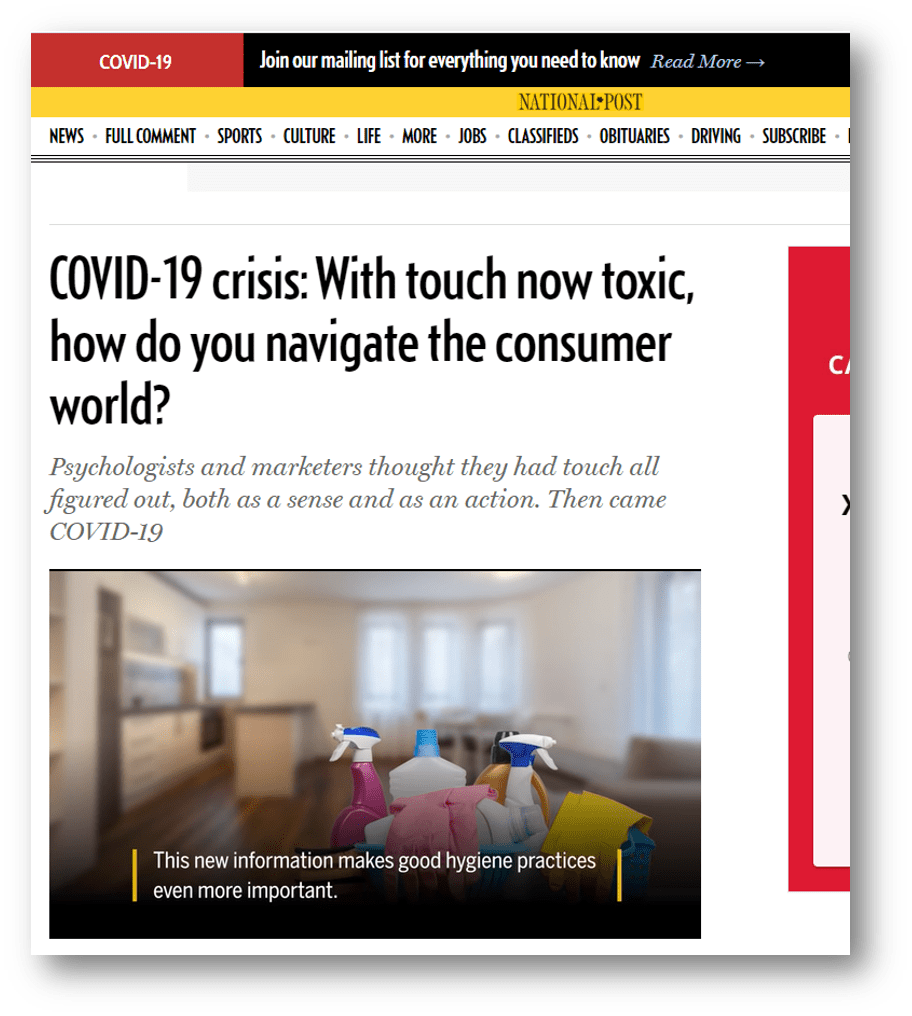COVID-19 has changed how people interact with and touch things; we are hyper aware of the surfaces we’re touching. Take a look at your phone or a remote control, I bet you noticed all of the nooks and crannies where germs and viruses can live. Historically, touching surfaces was just part of daily life and we didn’t think twice about it, now, our reality has changed. Some devices, might be able to get away with going “touchless”, and it works very well in some cases, while other manufacturers are left questioning what is their best plan going forward?
We’re here to tell you: touch isn’t going anywhere!
Our lives revolve around touch, and as cool and futuristic as it is to think about a touchless world, it’s just not practical.
For over 40 years Xymox has been in the business of touch, so with headlines like “Covid-19 Crisis: With touch now toxic, how do you navigate the consumer world?” and “9 Predictions for a Post-Coronavirus World” with the number 1 prediction being “More Contactless Interfaces and Interactions“, we felt it was important to do some digging into some realistic design considerations going forward. Our goal is to be a resource to help you navigate these strange times and choose an HMI design that will not only last through obsessive cleanings, but also give your customers (or end-users) peace-of-mind when touching your product.


Design Considerations:
First, let’s talk about HMI types…there are a number of interface types to choose from, push button, elastomer/rubber keypad, metal keypad, but the two we are going to focus on right now are touch sensors and membrane switches. Why, you ask? Both of these HMI types have, by design, smooth surfaces; no keys popping out of a bezel, which makes a quick wipe-down, easy and effective. In a time of frequent cleanings, and fear of touch, a smooth surfaces is desirable – at quick glance it doesn’t evoke a sense of hesitation before touching it because there are few (if any) areas for germs and viruses to lurk.
- Membrane switch – you don’t need to forfeit the “button feel” when switching from an elastomer or plastic buttons, tactile feel (think: the crisp snap of a metal dome) with raised buttons offer a similar user experience while still offering a smooth surface.
- Touch sensor – sleek, modern, hi-tech & user-friendly, it is what many have come to expect for an HMI, thanks to cell phones, and the overall prevalence of touch screens in the world.
The next design consideration is sealing. It doesn’t matter what kind of user interface you have a proper seal is more critical now than before – in the past, a lot of assemblies could typically get away with a basic seal, now, with surfaces requiring more frequent cleanings, a proper seal to keep liquids from accessing the electronics is critical to prevent field failures!
The final design consideration is overlay material choice; it is important to choose a robust and reliable material that can provide abrasion and chemical resistance. There are many materials to choose from, the common options include glass, acrylic, polycarbonate, and polyester. Most materials have hard-coating options, these are a great way to provide long-term protection against scratches and cleaners/chemicals. We’ve heard some questions and confusion about anti-microbial coatings that we’d like to clear up – anti-microbial coatings do not self-disinfect, they do still need to be cleaned. These hard coatings protect the product from the growth of bacteria that can cause stains and orders. Materials without a hard-coating tend to discolor over time, anti-microbial coatings prevent bacteria from reproducing, it will not grow and spread, but the HMI must still be wiped down to disinfect. Ultimately, hard-coatings help ensure your product stays looking nice on the surface despite the frequency of use or chemical & environmental exposure.
Give your customers peace-of-mind:
It doesn’t look like this new reality is going away anytime soon, and it might even be affecting your bottom line – take charge of what you can. A quick wipe will not disinfect whatever is lingering in the nooks & crannies, get a leg up over your competition and give your customers a smooth user interface that they can confidently touch, knowing that it’s a clean surface.
Not sure where to begin? We’re here to help.
